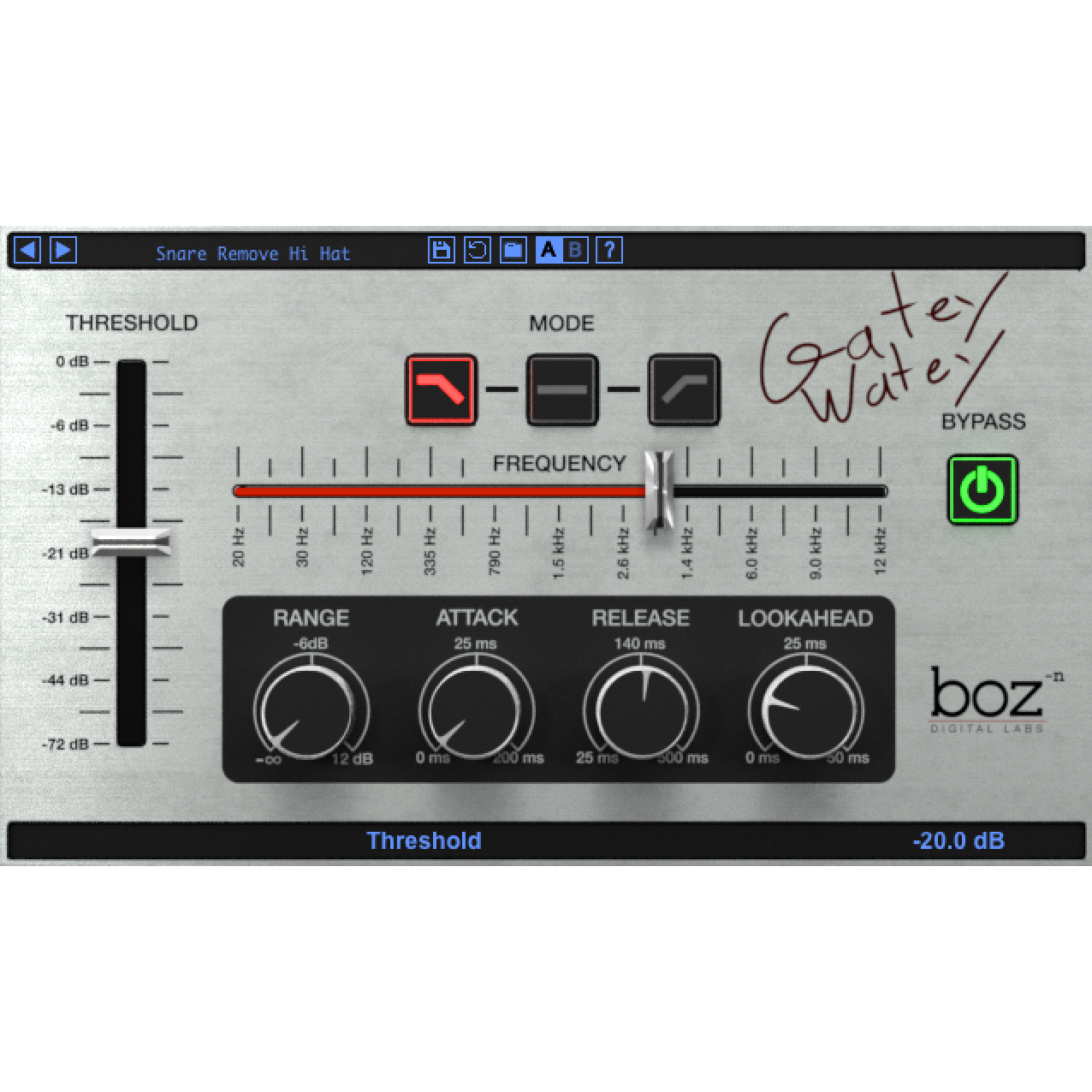Boz Digital Labs Gatey Watey
Frequency-based Gate Plugin
Unlike other gates, Gatey Watey enables you to zero in on precisely the frequency range you want attenuate without the hit-or-miss tweaking of complicated controls, yielding excellent results regardless of your skill level.
Instead of being time-based like traditional gates, Gatey Watey lets you select the frequencies you want to attenuate for a smooth and natural sound. If you want to shorten cymbal tails without losing the resonance of the kit, quiet singing toms without choking them, or tame the fizz but keep the fuzz on distorted guitars, Gatey Watey will give you the closure you need to move on and mix.
Gatey Watey is a forward-thinking, resource-friendly plug-in that not only eliminates the guesswork typical of complicated gates, but also the steep learning curve as well.
Gatey Watey is how a gate should work, especially if you want to breeze through the tedious housekeeping processes of noise cleanup and track preparation and focus on creativity.
Features
- Frequency-selective gating
- Look-ahead preserves transients
- No gate chatter
- Simple user-friendly interface
- No learning curve
Cracking the Code
The reasons for using gates have never gone away: singing toms, too much cymbal-work on a drum kit, bleed in kick and snare that makes processing troublesome at best, and we haven't even gotten to guitars. Gating is a key element for increasing dynamic range and bringing out the punch and focus of drums in a dense mix. And yes, gates come standard in all DAWs, but how often do you actually use them? And wouldn't you prefer a gate that works without all the histrionics (and hysteresis)?
In order to increase appeal, gate plug-ins have some complicated and downright incomprehensible controls, yet they still operate on the same principle as analog gates from the days of old. Some argue that gates are outdated technology in the face of powerful DAW editing. For example, there's that clip gain trick used in place of gating, which requires you to cut regions, say between tom fills, and reduce the gain of the clip by around -14dB to maintain a natural sound. If you don't have an intern to do it for you, you'll want something that gets the tedium out of the way. The real question is whether you want to focus on mixing, or spend hours cutting spaces between every snare, kick, and tom hit? And what if you have cymbal or hi-hat bleed you want to get rid of? That’s near impossible to edit. Again, wouldn't you rather have a gate that does all that for you in a fraction of the time? Of course you would.
Controls
Gatey Watey has three mode buttons: high-pass, low pass, and normal gate operation (should you need it). Below these buttons is a frequency slider ranging from 20Hz to 12kHz, which lights red and blue above and below the slider position (and depending on which mode you select). Below the frequency slider are Range, which determines how many dB the gate will attenuate; Attack, which sets how quickly the gate will respond (0ms – 200ms); Release, which determines how fast or slow the gate will close (25ms – 500ms), and Lookahead, which ranges from 0ms to 50ms. The Threshold slider on Gatey Watey's left side also lights red and blue coinciding with the frequency slider and mode so you can see what’s happening graphically. And finally, a bypass button lives on the right side of the GUI.
System Requirements
- MacOS: 10.5 Leopard - 10.15 Catalina
- Windows XP - Windows 10
Plugin Formats
AAX Native, Audio Units, VST2, VST3, RTAS




